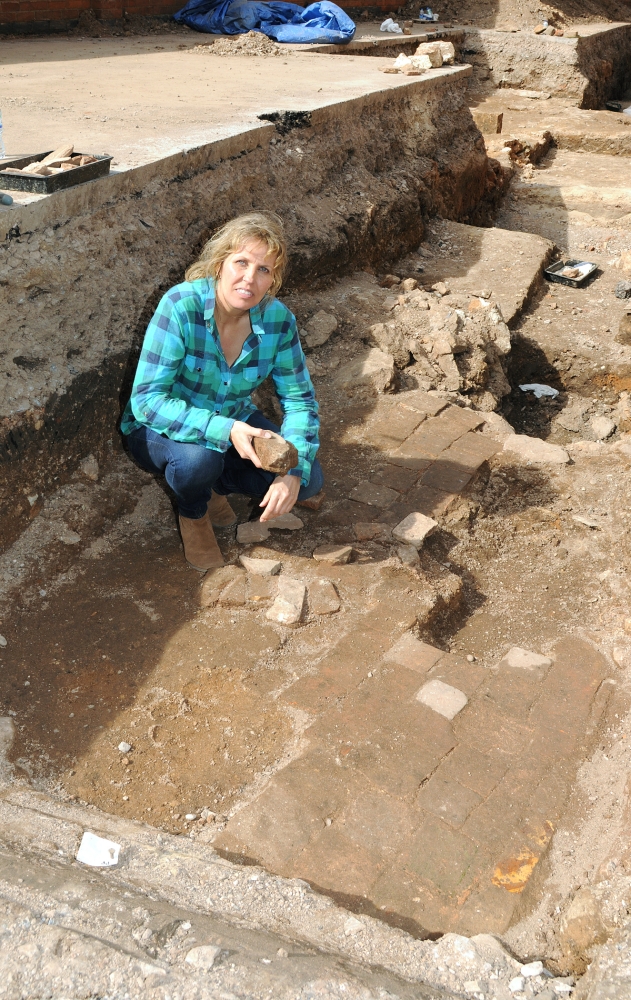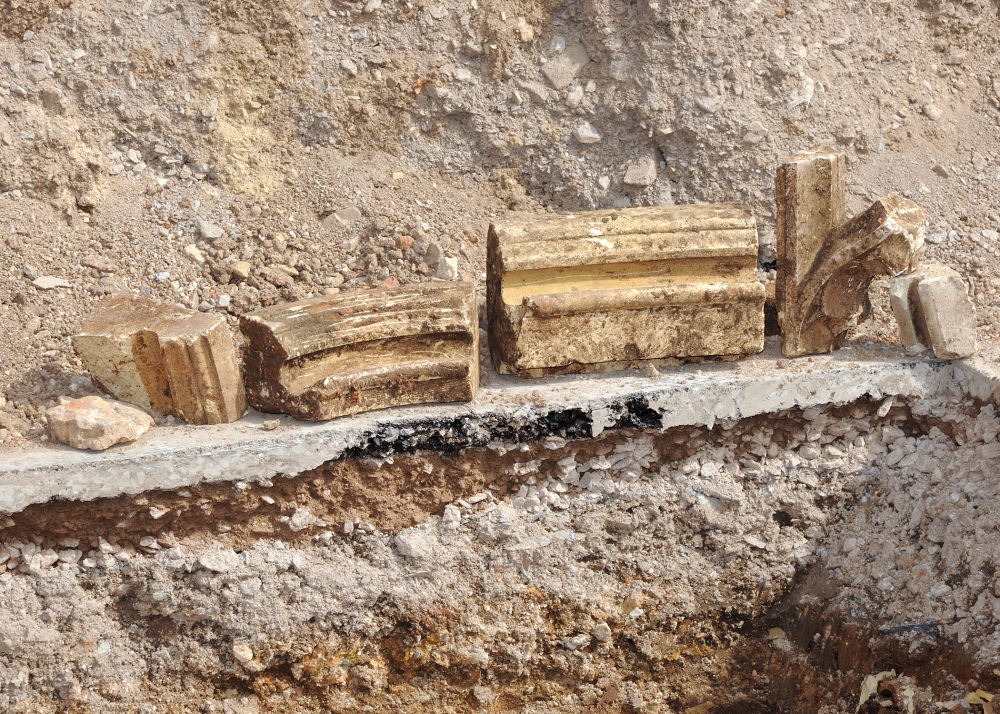Hunt for Lost King's Grave Uncovers 17th-Century Garden

The search for the grave of English King Richard III has uncovered a garden said to hold a memorial to the medieval monarch.
University of Leicester archaeologists announced today (Sept. 7) that they have found paving stones that may belong to the garden of Robert Herrick, a mayor of Leicester who built a mansion and garden over the church where Richard III was buried. In 1612, a man named Christopher Wren visited Herrick and reported that the garden contained a 3-foot (1-meter) tall stone pillar inscribed, "Here lies the body of Richard III sometime King of England."
"This is an astonishing discovery and a huge step forward in the search for King Richard's grave," Philippa Langley, a representative of the Richard III society, said in a statement. "Herrick is incredibly important in the story of Richard's grave, and in potentially helping us get a little bit closer to locating it."
Richard III ruled England from 1483 to 1485, until his death in battle during the War of the Roses. He was interred in Greyfriars Church in Leicester, but the location of both the church and the grave were lost.
The hunt for Richard III's final resting place began Aug. 25, when University of Leicester archaeologists began excavating the parking lot of the Leicester City Council, thought to be the location of the lost church. They soon uncovered medieval remnants, including floor and roof tiles, and a wall that they believe belongs to Greyfriars Church. [See Images of the Medieval Church Artifacts]
The last known historical record is Wren's description of Herrick's garden memorial from 1612. In 1711, Herrick's descendents sold the mansion. It was torn down in the 1870s and replaced by municipal buildings, according to the University of Leicester. The garden area seems to have remained undeveloped until the 1930s or 1940s, when it was paved over.
The newly discovered paving stones appear to be re-used medieval tiles, worn and of many different sizes, said Richard Buckley, the archaeologist leading the dig.
Sign up for the Live Science daily newsletter now
Get the world’s most fascinating discoveries delivered straight to your inbox.
"Although the date at which the paving was laid has yet to be confirmed, we suspect that it relates to the period of Herrick's mansion," Buckley said in a statement. "Interestingly, the 18th-century map of Leicester shows a formal garden with a series of paths leading to a central point."

Meanwhile, an excavation trench inside the Greyfriars Church has turned up window tracery fragments, Buckley said. These may belong to the east window of the church, near the high altar, which itself is near the choir where Richard III is said to be buried. If the King's body is found, he will be reinterred in Leicester Cathedral.
"Having overcome the major hurdle of finding the church, I am now confident that we are within touching distance of finding the choir — a real turning point in the project and a stage which, at the outside, I never really thought we might reach," Buckley said.
Follow Stephanie Pappas on Twitter @sipappas or LiveScience @livescience. We're also on Facebook & Google+.

Stephanie Pappas is a contributing writer for Live Science, covering topics ranging from geoscience to archaeology to the human brain and behavior. She was previously a senior writer for Live Science but is now a freelancer based in Denver, Colorado, and regularly contributes to Scientific American and The Monitor, the monthly magazine of the American Psychological Association. Stephanie received a bachelor's degree in psychology from the University of South Carolina and a graduate certificate in science communication from the University of California, Santa Cruz.









